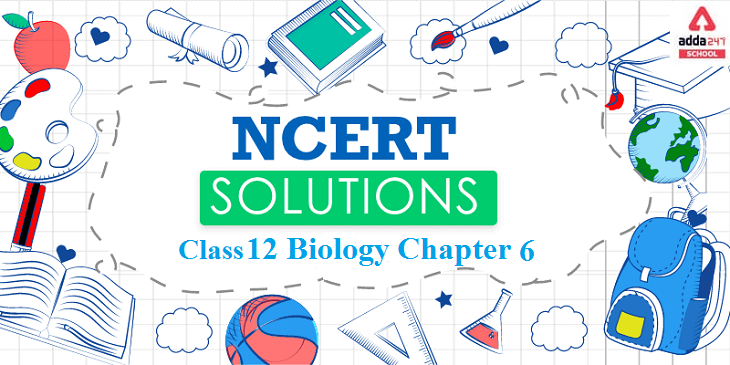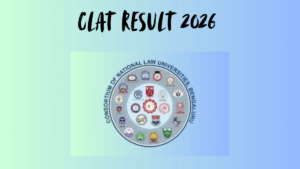Adda 247 provides NCERT Solutions for Class 12 Biology Chapter 6 for those who wish to excel in their exams. Teachers with specialised knowledge of respective subjects provide the NCERT Solutions for class 12 in line with the latest marking scheme. The solutions are set in accordance with the NCERT class 12 biology guidelines and in a language that is understandable to all students. By reading the solutions, students can simply develop a good foundation. Students rely on the NCERT solutions supplied by Adda 247. The solutions are developed by subject matter specialists who are extremely knowledgeable about their subjects.
NCERT Solutions for Class 12 Biology Chapter 6 – Evolution
The chapter provides information about Evolution. Evolutionary biology is the study of history of life forms on Earth. The process of gradual modification of simpler forms into the present complex forms over millions of years is called evolution. Charles Darwin concluded that existing living forms share similarities to varying degrees not only among themselves but also life forms that existed millions of years ago. Alfred Wallace stated that all the existing life forms share similarities and shares some common ancestors which are present at different periods in the history of earth.
Important question of Ncert Solutions Class 12 Biology Chapter 6
Question 1. Explain antibiotic resistance observed in bacteria in light of Darwinian selection theory.
Answer:
- Darwinian selection theory states that individuals with favourable variations are better adapted than individuals with less favourable variation.
- It means that nature selects the individuals with useful variation as these individuals are better evolved to survive in the existing environment.
- An example of such selection is antibiotic resistance in bacteria.
- When bacterial population was grown on an agar plate containing antibiotic penicillin, the colonies that were sensitive to penicillin died, whereas one or few bacterial colonies that were resistant to penicillin survived.
- This is because these bacteria had undergone chance mutation, which resulted in the evolution of a gene that made them resistant to penicillin drug.
- Hence, the resistant bacteria multiplied quickly as compared to non-resistant (sensitive) bacteria, thereby increasing their number.
- Hence, the advantage of an individual over other helps in the struggle for existence.
Question 2. Find out from newspapers and popular science articles any new fossil discoveries or controversies about evolution.
Answer: Paleontology is the field of science the helps us to understand about evolution by the use of fossils.
Fossils of dinosaurs were found that have revealed the evolution of reptiles in Jurassic period. Two unusual fossils recently found in China which brings the controversy over the evolution of birds. Confuciusornis lived during the Cretaceous period in China is the genus of the primitive bird.
Question 3. Attempt giving a clear definition of the term species.
Answer: Species can be defined as a group of organisms, which have the capability to interbreed in order to produce fertile offspring and do not breed with members of other species.
Question 4. Try to trace the various components of human evolution (hint: brain size and function, skeletal structure, dietary preference, etc.)
Answer: The various components of human evolution involve the age of appearance, brain capacity, posture, locomotion, height, body hairs, dietary preferences, skeletal structure, cranium structure etc. A summary of human evolution based on these components is as follows:
| Name of the Organisms | Brain capacity in cm | Posture | Dietary preferences | Some other features | |
| 1. | Dryopithecus | not known | Bent, ape-like | Soft fruits and leaves | Equal sized arms and legs, large canines |
| 2. | Ramapithecus | not known | Semi-erect, more man-like | seeds and nuts | Large molars, small canines |
| 3. | Australopithecus | 500 | Fully erect | Herbivorous | Small canines, hunted with stones |
| 5. | Homo habilis | 650-800 | Fully erect | Carnivorous | Toolmakers with small canines |
| 6. | Homo erectus | 900 | Fully erect | Omnivorous | Used tools made of stones and bones |
| 7. | Homo neanderthalnsis | 1400 | Fully erect | Omnivorous | Cave dwellers used to hide their bodies |
| 8. | Homo sapiens | 1200-1600 | Fully erect | Omnivorous | Highly intelligent, social |
Question 5. Find out through internet and popular science articles whether animals other than man has self-consciousness.
Answer: Self-consciousness is defined as the awareness of oneself. Other than man there are some animals which are self-conscious. These include dolphins, elephants, chimpanzees, apes and monkeys. Self-consciousness in animals can be studied using the mirror test. When chimpanzees were exposed to the mirror for the first time they were threatened. However on repeated exposure they started looking into the mirror and grooming, picking their nose, making faces, etc.
Question 6. List 10 modern-day animals and using the internet resources link it to a corresponding ancient fossil. Name both.
Answer: The modern-day animals and their ancient fossils are listed in the following table.
| Animal | Fossil |
| Man | Ramapithecus |
| Horse | Eohippus |
| Dog | Leptocyon |
| Camel | Protylopus |
| Elephant | Moerithers |
| Whale | Protocetus |
| Fish | Arandaspis |
| Tetrapods | Icthyostega |
| Bat | Archaeonycteris |
| Giraffe | Palaeotragus |
Question 8. Describe one example of adaptive radiation.
Answer: Adaptive radiation refers to the process in which the individuals belonging to a rapidly diversifying group, diverge from their lineage to form new species. Adaptive radiation works on the theory of natural selection. One example of adaptive radiation is Darwin’s finches of Galapagos island. These finches were formed from a single diversifying species that came on this geographical region accidentally. The new species diversified and got adapted to the conditions present on this habitat. The different finches developed different eating habits and accordingly developed different beak structures. This further led to their evolution through adaptive radiation
Question 9. Can we call human evolution as adaptive radiation?
Answer: No, we cannot call human evolution as adaptive radiation.
Adaptive radiation is the diversifying of organisms from a single species due to various factors such as competition for resources, isolation in a different environment, etc.
Human evolution was a gradual process of anatomical, physiological and changes that took place over a long period of time. The humans did not diversify into many species from a common ancestor. They rather enhanced over the period of time, suiting best according to their current environment.
Question 10. Using various resources such as your school Library or the internet and discussions with your teacher, trace the evolutionary stages of any one animal, say horse.
Answer: The evolution of horse started with Eohippus during Eocene period. It involved the following evolutionary stages.
(i) Gradual increase in body size
(ii) Elongation of head and neck region
(iii) Increase in the length of limbs and feet
(iv) Gradual reduction of lateral digits
(v) Enlargement of third functional toe
(vi) Strengthening of the back
(vii) Development of brain and sensory organs
(viii) Increase in the complexity of teeth for feeding on grass
The evolution of horse is represented as
(i) Eohippus
It had a short head and neck. It had four functional toes and a splint of 1 and 5 on each hind limb and a splint of 1 and 3 in each forelimb. The molars were short crowned that were adapted for grinding the plant diet.
(ii) Mesohippus
It was slightly taller than Eohippus. It had three toes in each foot.
(iii) Merychippus
It had the size of approximately 100 cm. Although it still had three toes in each foot, but it could run on one toe. The side toe did not touch the ground. The molars were adapted for chewing the grass.
(iv) Pliohippus
It resembled the modern horse and was around 108 cm tall. It had a single functional toe with splint of 2nd and 4th in each limb.
(v) Equus
Pliohippus gave rise to Equus or the modern horse with one toe in each foot. They have incisors for cutting grass and molars for grinding food.











 CUET PG 2026 Registration Form OUT at ex...
CUET PG 2026 Registration Form OUT at ex...
 AILET Result 2026 Release Date, How to D...
AILET Result 2026 Release Date, How to D...
 CLAT Result 2026 Out, Download Scorecard...
CLAT Result 2026 Out, Download Scorecard...






